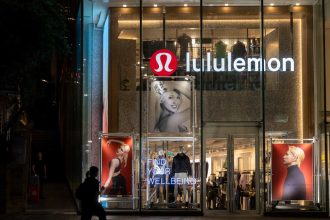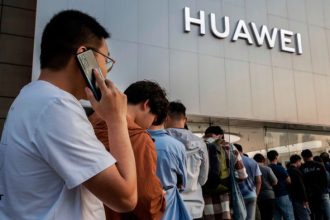The viability of online multi-brand luxury marketplaces has been an open question for years as the most prominent names, like Farfetch
FTCH
These companies came on strong in the early days because the established luxury brands hesitated to sell their own wares online, preferring the high-touch engagement offered in their stores. Both Yoox and Net-A-Porter were founded as separate companies in 2000, only to be merged in 2015 after gaining the financial support of Richemont. Matches started as a brick-and-mortar retailer in 1987 then opened online in 2007 and Farfetch launched in 2008.
But now that virtually every major luxury brand operates an online shopping portal, luxury marketplaces have become redundant and irrelevant, leaving Farfetch, YNAP and Matches hanging on by a thread.
The Fallen
The collapse of Farfetch was chronicled here and the subsequent last-minute rescue by Coupang, but there are new developments in the ongoing saga.
The Business of Fashion reported that Farfetch founder and CEO José Neves has left the company along with numerous senior staff that moved over with him. No replacement has been named, but it gives Coupang an opportunity to completely makeover the company in its own image, though its future success is a big question mark.
While Richemont still operates YNAP and its various websites, it reports YNAP financials under “discontinued operations,” and is looking for a buyer. I can’t imagine who’d take it on, if even a luxury powerhouse like Richemont couldn’t make it work.
And now Matches, alternatively known as Matchesfashion, is facing the same do-or-die situation. In December, just about the same time Coupang lent Farfetch a $500 million lifeline, Frasers Group stepped in to acquire Matches from investment first Apax Partners for some $66 million at current exchange rates (£52 million).
But in only three short months, Frasers sees no profitable way forward and has put Matches into receivership, according to the BBC. London-based advisory firm Teneo has been appointed to oversee next steps for the company and according to The Guardian, about half of its staff have been let go, leaving 273 without a job and 260 people to pick up the pieces.
“Like many luxury fashion retailers, Matchesfashion has experienced a sharp decline in demand over the last year, as a result of well-publicised pressures on discretionary spend, stemming from high inflation and high-interest macro environment,” Teneo’s senior managing director Benji Dymant shared with The Guardian.
“Since Frasers’ acquisition of Matchesfashion in December 2023 and an injection of additional funding, trading has continue to deteriorate, increasing the funding requirements of the business. This ultimately has resulted in the directors taking the difficult decision to place the company into administration,” he added. None of the above companies answered a request for comment.
Obviously, Frasers didn’t do enough due diligence when it made the decision to acquire Matches. And Apax was fortunate to get so much for its troubled company, which it acquired in 2017 from founders Tom and Ruth Chapman.
Though the terms of that agreement were not made public, it was estimated to be valued at about $1 billion. And fellow Forbes.com contributor Mark Faithful reported Apax may have invested as much as $760 million into the company over the course of its ownership.
Mytheresa Left Standing
The one major online luxury fashion marketplace left standing is Mytheresa. Like Matches, it started as a boutique then transitioned online in 2006. It became part of the Neiman Marcus Group in 2014, only to be spun-off in 2018 by NMG’s private equity owners. At the time, it was valued at $280 million.
Mytheresa went public in early 2021 and brought in just over $400 million on its first day of trading. CEO Michael Kliger has guided the company since 2015 and his prior experience as vice president Ebay International has given him insight into the special requirements of operating in an online marketplace environment.
In its most recent second quarter, Mytheresa so far seems to be immune to the problems that have beset Farfetch, YNAP and Matches, at least on the top line. Gross merchandise value was up 6% on a constant currency basis, totaling $339 million (€219.1) and net sales advanced 8.3% with a dramatic 17% increase in the U.S.
Yet it still reported a nearly $6 million (€5.4 million) net loss in the quarter and adjusted EBITDA of $8.6 million (€7.9 million) was down over 50% from previous quarter with the EBITDA margin dropping from 9.3% to 4%.
Clearly, Kliger and the Mytheresa team hope that existing marketplace customers caught up in the throes befalling the other players will make the switch and that its current customers keep buying as it leans into exclusive capsule collections and pre-launches from brand partners, including Loro Piana, Alexander McQueen, Givenchy, Pucci and others.
Mytheresa is guiding on full year GMV and net sales growth in the range of 8% to 13% and adjusted EBITDA margin between 3% to 5%.
“We are pleased with our results in a challenging macro environment,” Kliger said in a statement and added in understated fashion, “We not only surpassed market expectations but also outperformed almost all competitors.”
He signaled confidence going forward. “Our resilient business model and our clear focus on high-spending, wardrobe-building top customers allow us to win market share in the current market environment. We believe that Mytheresa offers the best digital luxury shopping experience for big-spedning customers and true luxury brands.”
Perhaps Mytheresa has cracked the code in the online luxury fashion marketplace business model that has eluded Farfetch, YNAP and Matches.
See also:
Read the full article here





